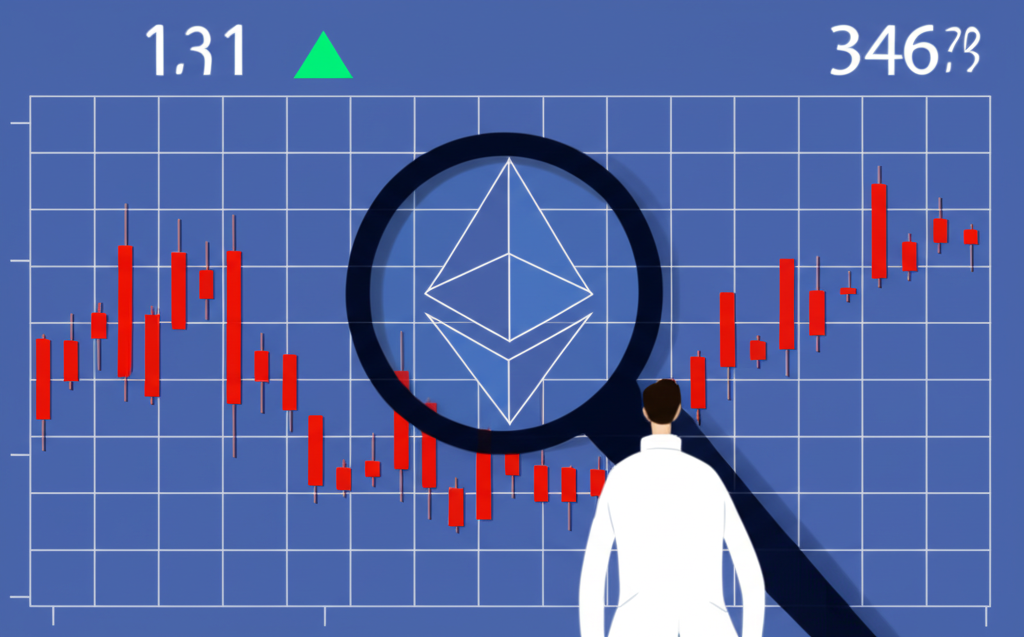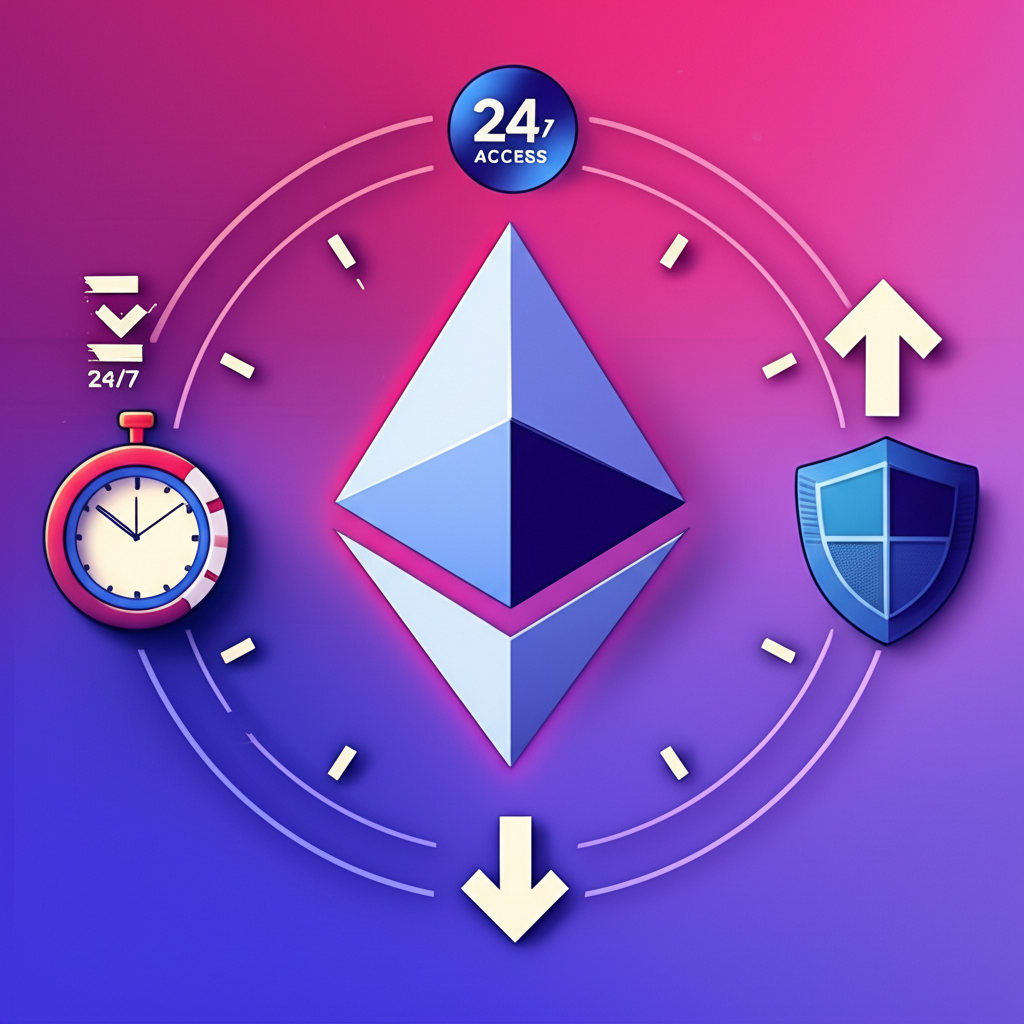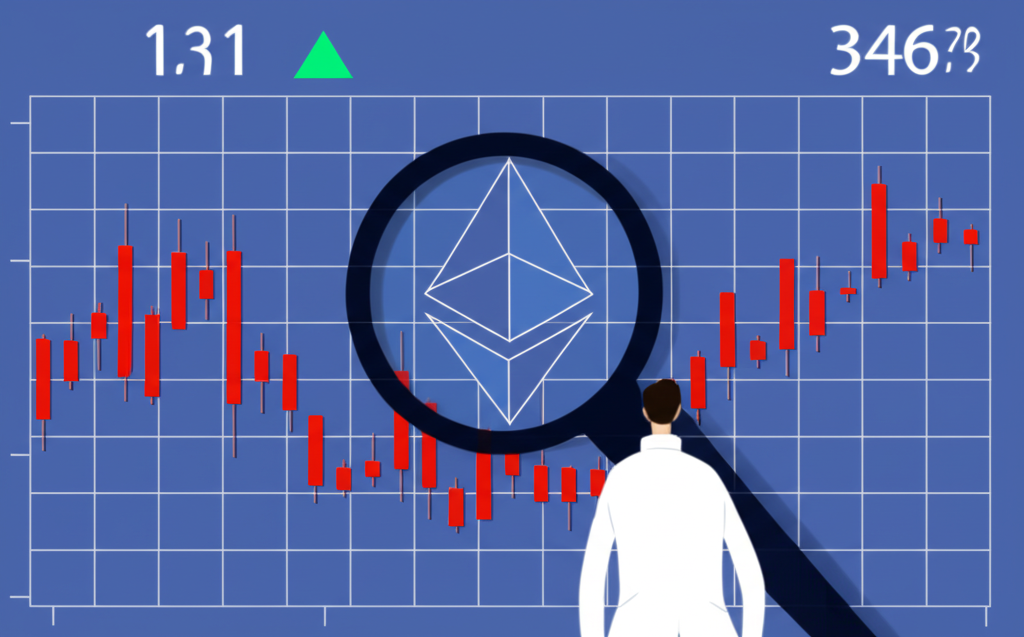What Are Ethereum CFDs? An Introduction to Contracts for Difference

Contracts for Difference, commonly known as CFDs, are financial instruments that let traders profit from price changes in assets like stocks, commodities, or cryptocurrencies—without ever taking ownership of the underlying asset. In the world of digital currencies, an Ethereum CFD enables you to bet on whether the value of ETH will go up or down, all without needing to buy, store, or manage real Ether tokens. This makes it an appealing option for those who want exposure to Ethereum’s price action but prefer to avoid the technical and security challenges of handling crypto directly.
When you open an Ethereum CFD position, you’re entering into a private agreement with a broker. The payout is determined solely by the difference between the entry and exit prices of Ethereum. If you anticipate a rise and the market moves upward, you earn the difference. Conversely, if you expect a drop and go short, you still stand to gain if the price falls. But the same mechanism works in reverse—miscalculate the direction, and your losses will reflect that gap. A defining feature of CFDs is leverage, which allows traders to control large positions with a relatively small deposit, often referred to as margin. While this increases potential returns, it also exposes traders to amplified risk.
Why Trade Ethereum CFDs? Benefits & Opportunities

Trading Ethereum CFDs has gained traction among both novice and experienced market participants due to its unique blend of flexibility, accessibility, and strategic advantages. Whether you’re looking to hedge, speculate, or diversify, these instruments offer a streamlined way to engage with one of the most influential cryptocurrencies.
Leverage and Enhanced Exposure
One of the most compelling features of CFD trading is leverage. It allows you to open a position much larger than your initial capital. For example, with 1:10 leverage, a deposit of $1,000 can control a $10,000 exposure to Ethereum. This magnification can lead to significant profits when your predictions are correct, enabling traders to maximize their market exposure without tying up large amounts of capital. However, this power comes with proportional risk—gains and losses are calculated based on the full position size, not just your margin.
Ability to Go Long or Short
Traditional investing usually rewards you only when prices go up. Ethereum CFDs break that limitation. You can take a long position if you believe ETH will appreciate, or a short position if you expect a decline. This two-way market access is especially valuable in the crypto space, where sharp corrections are common. Being able to profit from downward movements gives traders a strategic edge during bear markets or volatile corrections.
24/7 Market Access
Unlike traditional financial markets that close on weekends and holidays, the cryptocurrency market never sleeps. Ethereum CFDs give you continuous access to price movements, enabling you to react instantly to breaking news, macroeconomic shifts, or sudden market swings—any time of day or night. This round-the-clock availability is ideal for active traders who want to stay in control of their positions at all times.
High Liquidity and Volatility
Ethereum consistently ranks among the most traded cryptocurrencies, ensuring strong liquidity. This means you can enter and exit positions quickly, often with minimal slippage. While volatility is often seen as a risk, it also creates opportunities. Rapid price swings can lead to substantial gains over short periods, especially for traders skilled in timing the market using technical analysis or event-based strategies.
No Direct Ownership, No Wallet Management
Since you’re not buying actual ETH, there’s no need to set up a cryptocurrency wallet, manage private keys, or worry about securing digital assets from hacks or loss. Everything is handled through your broker’s platform. This removes a major barrier for newcomers and simplifies the trading experience for everyone. You get all the exposure without the operational complexity of self-custody.
The Risks of Trading Ethereum CFDs: What You Need to Know

While Ethereum CFDs offer powerful tools for speculation, they come with serious risks that every trader must understand before committing capital. These instruments are not for the faint of heart—especially in a market as unpredictable as cryptocurrency.
High Volatility
Ethereum’s price can swing dramatically in a matter of minutes due to news, regulatory developments, or shifts in investor sentiment. While volatility can create profit potential, it can also erase gains—or worse—just as quickly. A single tweet from a major influencer or an unexpected regulatory announcement can trigger a cascade of price movement that moves against your position, leading to outsized losses.
Leverage Magnifies Losses
Leverage works both ways. While it boosts gains on successful trades, it also multiplies losses when the market moves against you. With high leverage, even a small adverse price movement can result in a loss greater than your initial deposit. In extreme cases, your account balance could go negative, requiring you to cover the shortfall—a scenario known as a margin deficit.
Margin Calls and Stop-Outs
When your losing positions reduce your account equity below the broker’s required level, you may receive a margin call. This is a demand to deposit additional funds to maintain your open trades. If you fail to respond, or if the market continues to move against you, your broker may automatically close your positions—a process called a stop-out. These forced liquidations often happen at the worst possible moment, locking in losses at unfavorable prices.
Counterparty Risk
CFDs are over-the-counter products, meaning you’re trading directly with your broker rather than on a centralized exchange. This creates counterparty risk—the possibility that your broker may fail to meet their financial obligations. If the broker becomes insolvent or acts in bad faith, your funds could be at risk. Always choose a broker regulated by a reputable authority to reduce this exposure.
Regulatory Scrutiny
The legal status of CFDs varies widely across countries. Some jurisdictions have strict rules, while others ban them outright for retail investors. Regulations are constantly evolving, especially in the fast-moving crypto space. A policy change could suddenly restrict access to certain products or impose new compliance requirements, impacting your ability to trade.
How to Trade Ethereum CFDs: A Step-by-Step Guide

Entering the world of Ethereum CFD trading doesn’t have to be overwhelming. By following a structured approach, you can minimize mistakes and build confidence as you gain experience.
Step 1: Choose a Reputable CFD Broker
Your broker is your gateway to the market, so this decision is critical. Look for firms regulated by trusted authorities like the UK’s Financial Conduct Authority (FCA), Australia’s ASIC, or Cyprus’s CySEC. Check user reviews, withdrawal speed, platform stability, and the availability of Ethereum CFDs. A well-regulated broker offers better protection for your funds and more reliable trading conditions.
Step 2: Open and Fund Your Trading Account
Once you’ve selected a broker, complete the registration process. This usually involves submitting identification documents for KYC (Know Your Customer) verification. After your account is approved, fund it using bank transfer, credit card, or e-wallets like Skrill or Neteller. Some brokers also accept cryptocurrency deposits, though this varies.
Step 3: Understand the Trading Platform
Most brokers provide demo accounts where you can practice with virtual money. Use this to explore the platform’s interface, test charting tools, and learn how to place different order types. Familiarity with the platform can make the difference between a well-executed trade and a costly mistake, especially during fast-moving markets.
Step 4: Conduct Market Analysis
Never trade based on guesswork. Use technical analysis to study historical price patterns, support and resistance levels, and momentum indicators. At the same time, stay updated on fundamental developments—such as Ethereum upgrades, regulatory news, or macroeconomic trends—that could influence market sentiment. Combining both approaches gives you a more complete picture.
Step 5: Place Your Trade
When you’re ready, decide whether to go long or short. Specify the trade size and choose your order type:
- Market Order: Executes immediately at the current price.
- Limit Order: Fills only when the price reaches your specified level.
- Stop-Loss Order: Automatically closes the trade if the price moves against you, limiting losses.
- Take-Profit Order: Closes the trade when your profit target is reached, securing gains.
Step 6: Monitor and Manage Your Position
Markets don’t stand still. After opening a trade, keep an eye on price action and adjust your stop-loss or take-profit levels as needed. Avoid emotional decision-making. Stick to your strategy and risk management plan, even when the market moves unexpectedly.
Choosing the Best CFD Broker for Ethereum Trading
Selecting the right broker can significantly impact your trading success. Not all platforms are created equal—some offer tighter spreads, better tools, or stronger regulation. Consider these factors carefully.
Regulation and Licensing
Always prioritize brokers regulated by recognized financial authorities. Regulation ensures transparency, fund segregation, and adherence to fair trading practices. It also provides a legal recourse if something goes wrong.
Trading Fees and Spreads
Costs add up over time. Compare the spreads—the difference between the buy and sell price—as well as any commissions, overnight financing charges (also known as swaps), and withdrawal fees. Lower, transparent costs mean more of your profits stay in your pocket.
Available Assets and Leverage
Make sure the broker offers Ethereum CFDs and, ideally, a wide range of other cryptocurrencies and financial instruments. Check the maximum leverage available for ETH and whether it aligns with your risk appetite. Some brokers offer up to 1:20 or more, but higher leverage isn’t always better.
Trading Platform Features
A high-quality trading platform should be intuitive, stable, and packed with analytical tools. Look for advanced charting, real-time data, technical indicators, and mobile app support. The ability to trade on the go can be crucial in a 24/7 market like crypto.
Customer Support
Reliable support can save you during critical moments. Test the broker’s responsiveness via live chat, email, or phone. 24/5 or 24/7 support is ideal, especially for traders in different time zones.
Deposit and Withdrawal Options
Check which payment methods are supported, how long withdrawals take, and whether there are hidden fees. Fast, hassle-free access to your funds is essential for managing risk and reinvesting profits.
| Feature | Description | Importance |
| :—————— | :—————————————————————————————————— | :——— |
| **Regulation** | Licensing by financial authorities (e.g., FCA, ASIC, CySEC) | High |
| **Spreads/Fees** | Competitive bid-ask spreads, low commissions, transparent overnight fees | High |
| **Leverage** | Flexible leverage options for ETH CFDs (e.g., 1:10, 1:20) | Medium |
| **Platform** | Intuitive interface, advanced charting tools, mobile compatibility | High |
| **Customer Support**| 24/5 or 24/7 support, multiple contact channels | Medium |
| **Funding** | Variety of deposit/withdrawal methods, fast processing, low fees | Medium |
Ethereum CFD Strategies and Advanced Market Insights
Once you’ve mastered the basics, incorporating advanced strategies can improve your edge in the market. Successful CFD trading isn’t just about timing—it’s about combining analysis, discipline, and risk control.
Integrating Technical Analysis for ETH CFDs
Technical indicators can help identify high-probability entry and exit points. For Ethereum CFDs, consider combining:
- Relative Strength Index (RSI): Detects overbought or oversold conditions, signaling possible reversals.
- MACD (Moving Average Convergence Divergence): Helps confirm trend direction and momentum shifts.
- Bollinger Bands: Highlight volatility and potential breakout or squeeze scenarios.
- Chart Patterns: Recognize formations like head and shoulders, triangles, or flags, which often precede significant moves.
Using multiple indicators in tandem can reduce false signals and increase confidence in your trading decisions.
Fundamental Drivers of Ethereum’s Price
Even though CFDs are short-term instruments, understanding Ethereum’s fundamentals can guide your trading outlook. Key factors include:
- Network Upgrades: Events like the Ethereum Merge, which shifted the network to proof-of-stake, had profound effects on investor confidence and tokenomics.
- DeFi and NFT Growth: Ethereum remains the leading platform for decentralized applications. Rising total value locked (TVL) in DeFi protocols often correlates with increased demand for ETH.
- Institutional Adoption: As more traditional finance players invest in or build on Ethereum, the asset gains credibility and stability.
- Macro Trends: Interest rates, inflation, and global regulatory sentiment can influence capital flows into or out of crypto markets.
Risk Management Techniques
Professional traders survive not because they win every trade, but because they manage risk effectively. Key practices include:
- Position Sizing: Limit each trade to 1–2% of your total capital to avoid catastrophic losses.
- Diversification: Don’t put all your capital into ETH CFDs. Spread risk across different assets or strategies.
- Stop-Loss and Take-Profit Discipline: Always set these orders before entering a trade. Adjust them as the market evolves, but never remove them out of emotion.
Understanding Market Sentiment
Crypto markets are highly psychological. News headlines, social media buzz, and whale movements can trigger sudden rallies or sell-offs. Monitor platforms like Twitter, Reddit, and crypto news sites. Sentiment analysis tools, which track emotions in market commentary, can also provide early warnings of shifts in momentum.
Navigating the Regulatory Landscape for CFD Ethereum in the US
The rules governing CFD trading differ sharply from one country to the next. For US residents, the situation is particularly restrictive.
US Regulations on CFDs
In the United States, CFDs are not permitted for retail investors. The Securities and Exchange Commission (SEC) and the Commodity Futures Trading Commission (CFTC) classify CFDs as over-the-counter derivatives that lack exchange oversight, making them too risky for the average trader. As a result, no US-regulated broker can legally offer CFD products to American citizens.
Accessing Offshore Brokers
Despite the ban, many US traders use offshore brokers based in Europe, Australia, or the Caribbean to access CFD markets. While technically possible, this path comes with serious drawbacks:
- No US Regulatory Protection: If an offshore broker fails or acts dishonestly, US authorities won’t intervene.
- Legal Gray Areas: While individuals may not be prosecuted, using offshore platforms to trade prohibited instruments carries potential legal and tax risks.
- Withdrawal Challenges: Some offshore brokers impose strict withdrawal processes or hidden fees, making it difficult to access your funds.
Traders considering this route must weigh the benefits against the loss of protection and increased uncertainty.
Tax Implications of CFD Trading
Regardless of where you trade, profits and losses from CFDs are typically subject to taxation. In most countries, these are treated as capital gains or business income, depending on your trading frequency and intent. In the US, even offshore trading must be reported to the IRS. Failure to do so can result in penalties. Always consult a qualified tax advisor familiar with crypto and derivatives to ensure compliance.
Ethereum CFDs vs. Other Investment Methods: A Comparative Look
Choosing how to engage with Ethereum depends on your goals, risk tolerance, and technical comfort.
CFDs vs. Spot Trading
| Feature | Ethereum CFDs | Spot Trading (Buying Actual ETH) |
| :————— | :————————————————————————- | :——————————————————————— |
| **Ownership** | You do not own the underlying ETH; you speculate on its price. | You own the actual ETH tokens in your wallet. |
| **Leverage** | High leverage available, amplifying both gains and losses. | No inherent leverage (unless borrowing funds). |
| **Short-Selling**| Easy to go short and profit from falling prices. | Requires specialized platforms or derivatives to short. |
| **Fees** | Primarily spreads, overnight funding fees (swaps), sometimes commissions. | Trading fees (commissions), withdrawal fees, network fees for transfers. |
| **Regulation** | Varies by jurisdiction; prohibited for retail in some regions (e.g., US). | Generally less strict regulation on direct crypto ownership (varies). |
| **Wallet Mgmt.** | No need for crypto wallets; managed by broker. | Requires managing private keys, securing a crypto wallet. |
CFDs vs. Futures/Options
While CFDs, futures, and options are all derivatives, they differ in structure and use:
- Futures: Standardized contracts traded on exchanges with fixed expiration dates. Often used by institutional players, they require margin but are more transparent than CFDs.
- Options: Provide the right—but not the obligation—to buy or sell ETH at a set price before expiration. Highly flexible but complex, involving variables like time decay and volatility.
- CFDs: More flexible and accessible for retail traders. They don’t expire (though overnight fees apply) and mirror the underlying price directly, making them easier to use for short-term speculation.
Conclusion: Is Ethereum CFD Trading Right for You?
Ethereum CFD trading offers a fast, flexible way to engage with one of the most dynamic assets in finance. With leverage, 24/7 access, and the ability to profit in any market condition, it appeals to active traders seeking agility and exposure. However, the same features that make it powerful also make it dangerous. Leverage can wipe out accounts quickly, and volatility can turn profitable positions into losses in minutes.
Success requires education, discipline, and a solid risk management plan. Start small, use demo accounts, and never trade with money you can’t afford to lose. Choose a regulated broker, understand the rules in your country, and stay informed about market developments. For those willing to put in the work, Ethereum CFDs can be a valuable tool—but only if approached with caution and respect.
Frequently Asked Questions About Ethereum CFD Trading
Is Ethereum a CFD, or is it a physical cryptocurrency?
Ethereum (ETH) is a physical, decentralized cryptocurrency that runs on the Ethereum blockchain. An Ethereum CFD (Contract for Difference) is a financial derivative that allows you to speculate on the price movement of ETH without actually owning the underlying cryptocurrency.
Are Contracts for Difference (CFDs) legal for US residents to trade?
No, Contracts for Difference (CFDs) are generally prohibited for retail investors in the United States by regulatory bodies like the SEC and CFTC. US residents often access CFD markets through offshore, non-US regulated brokers, which comes with significantly increased risks and reduced regulatory protections.
What specifically does “CFD” mean in the context of cryptocurrency trading?
In cryptocurrency trading, “CFD” means you are entering into a contract with a broker to exchange the difference in the price of a cryptocurrency (like Ethereum) between the time you open a position and the time you close it. You don’t buy or sell the actual crypto asset but rather speculate on its price changes.
How does trading Ethereum CFDs compare to traditional day trading of other assets?
Trading Ethereum CFDs shares many similarities with day trading other assets (like stocks or forex CFDs) in terms of strategy, technical analysis, and risk management. Key differences lie in the underlying asset’s volatility (crypto is often higher), 24/7 market access, and specific regulatory environments that might apply to crypto derivatives.
Where can I find reliable, real-time CFD Ethereum price data?
Reliable real-time CFD Ethereum price data can be found directly on your chosen CFD broker’s trading platform. Additionally, major financial news websites and dedicated cryptocurrency data aggregators often provide live price feeds for Ethereum, which CFD prices closely mirror.
What factors influence CFD Ethereum price prediction, and how reliable are they?
CFD Ethereum price predictions are influenced by factors such as:
- Ethereum network upgrades (e.g., the Merge, sharding)
- Growth of the DeFi and NFT ecosystems
- Overall cryptocurrency market sentiment
- Macroeconomic trends
- Regulatory news
- Technical analysis patterns and indicators
No prediction is 100% reliable due to crypto’s high volatility and unpredictable nature, making risk management essential.
What are the main differences between trading Ethereum CFDs and buying actual Ethereum?
The main differences are ownership, leverage, and wallet management. With CFDs, you don’t own ETH, use leverage, and don’t need a crypto wallet. When buying actual Ethereum (spot trading), you own the tokens, generally don’t use leverage, and must manage a crypto wallet for storage.
Can I use leverage when trading Ethereum CFDs, and what are the associated risks?
Yes, leverage is a core feature of CFD trading, allowing you to control a larger position with a smaller capital outlay. However, the associated risks are significant: leverage magnifies both profits and losses, meaning your losses can quickly exceed your initial investment and lead to margin calls or even account liquidation.
Which regulatory bodies oversee Ethereum CFD brokers, especially for international traders?
For international traders, Ethereum CFD brokers are typically overseen by financial regulatory bodies in their registered jurisdictions. Examples include the Financial Conduct Authority (FCA) in the UK, the Australian Securities and Investments Commission (ASIC), and the Cyprus Securities and Exchange Commission (CySEC). The specific regulator depends on where the broker is licensed.
What are the tax implications of profits and losses from Ethereum CFD trading?
The tax implications of Ethereum CFD trading profits and losses vary significantly by jurisdiction. In most countries, CFD trading is treated as a form of capital gains or income, and you are typically required to report these to your local tax authority. It is highly advisable to consult with a qualified tax professional to understand your specific obligations and ensure compliance.

留言